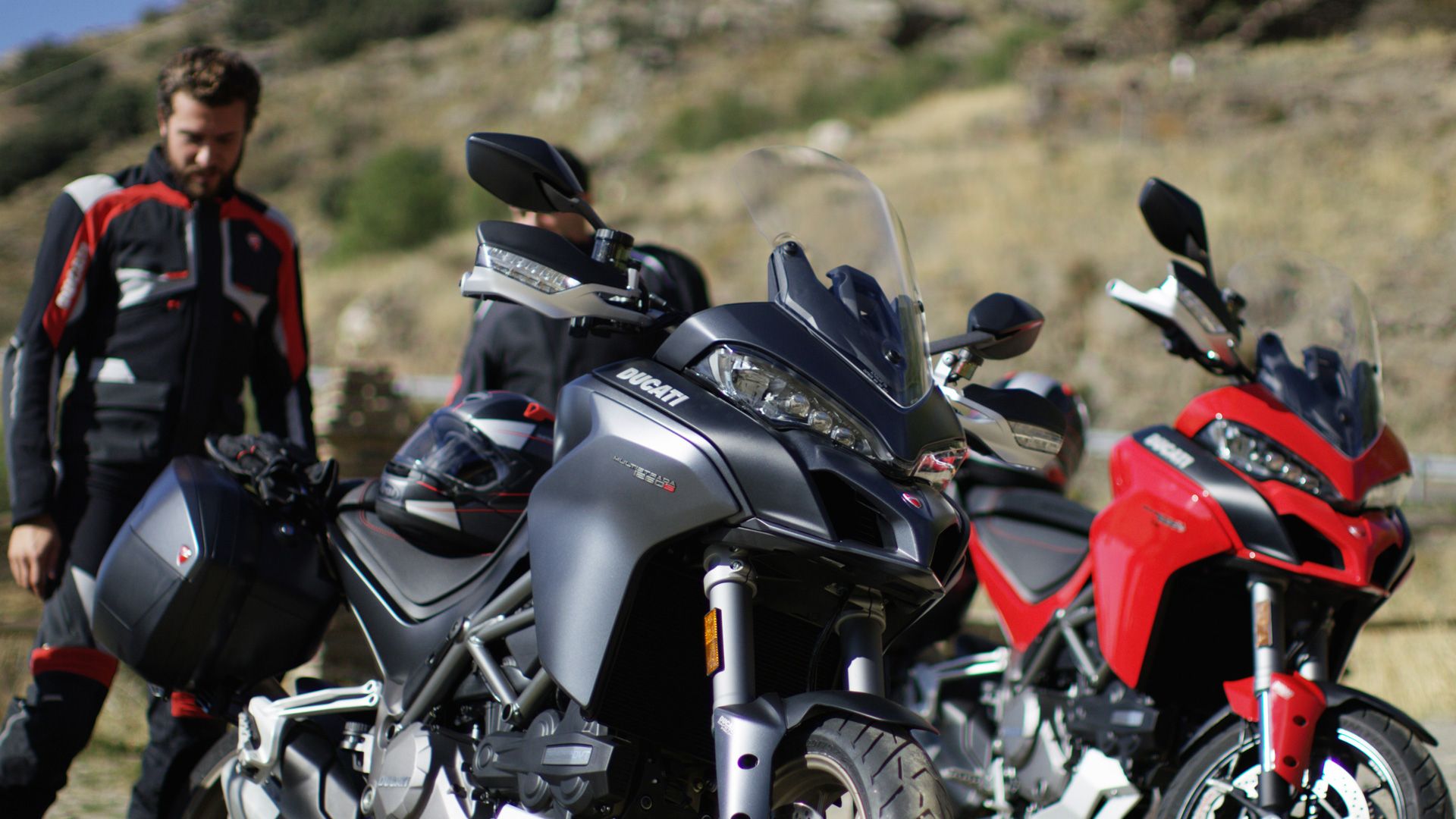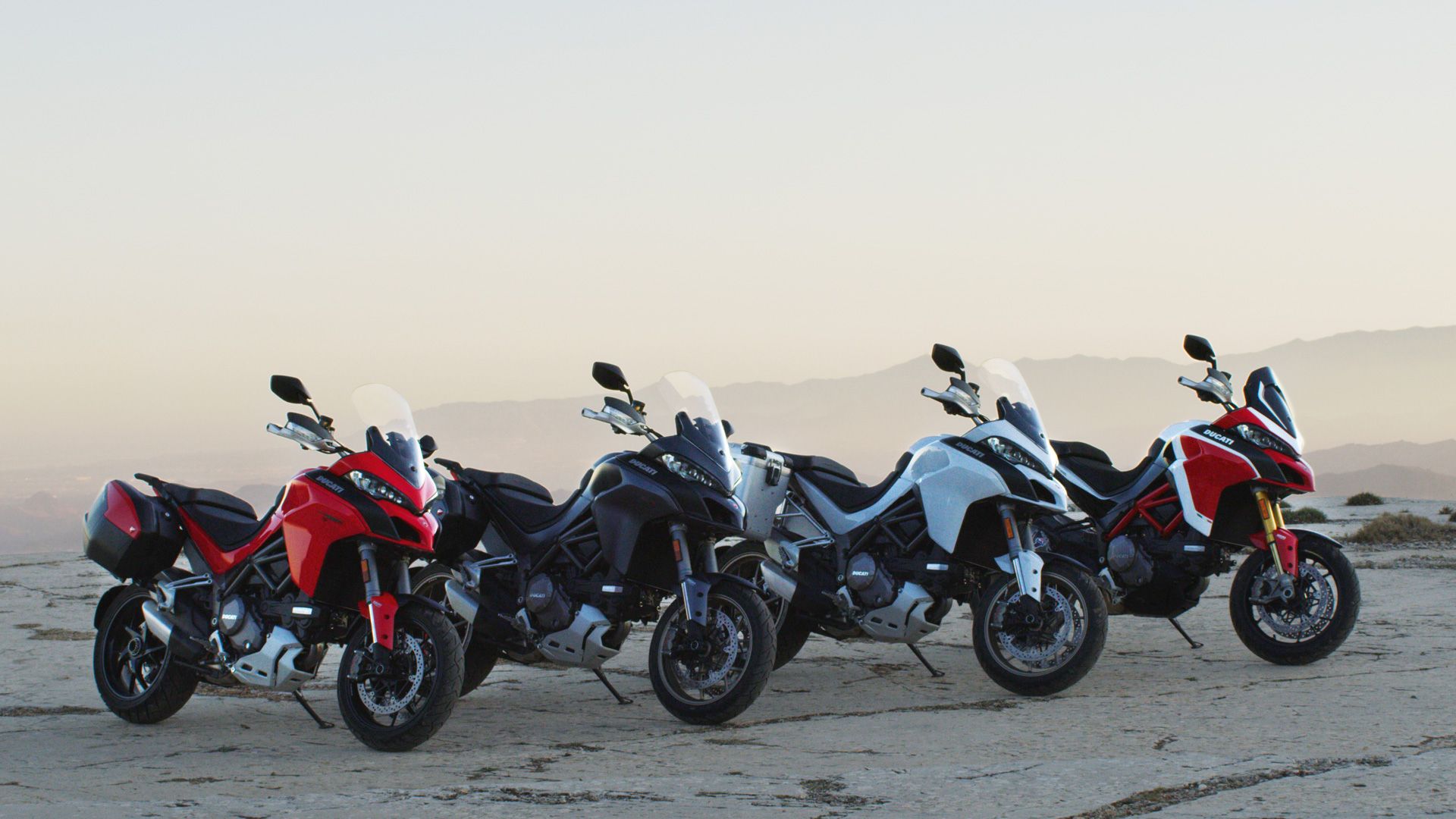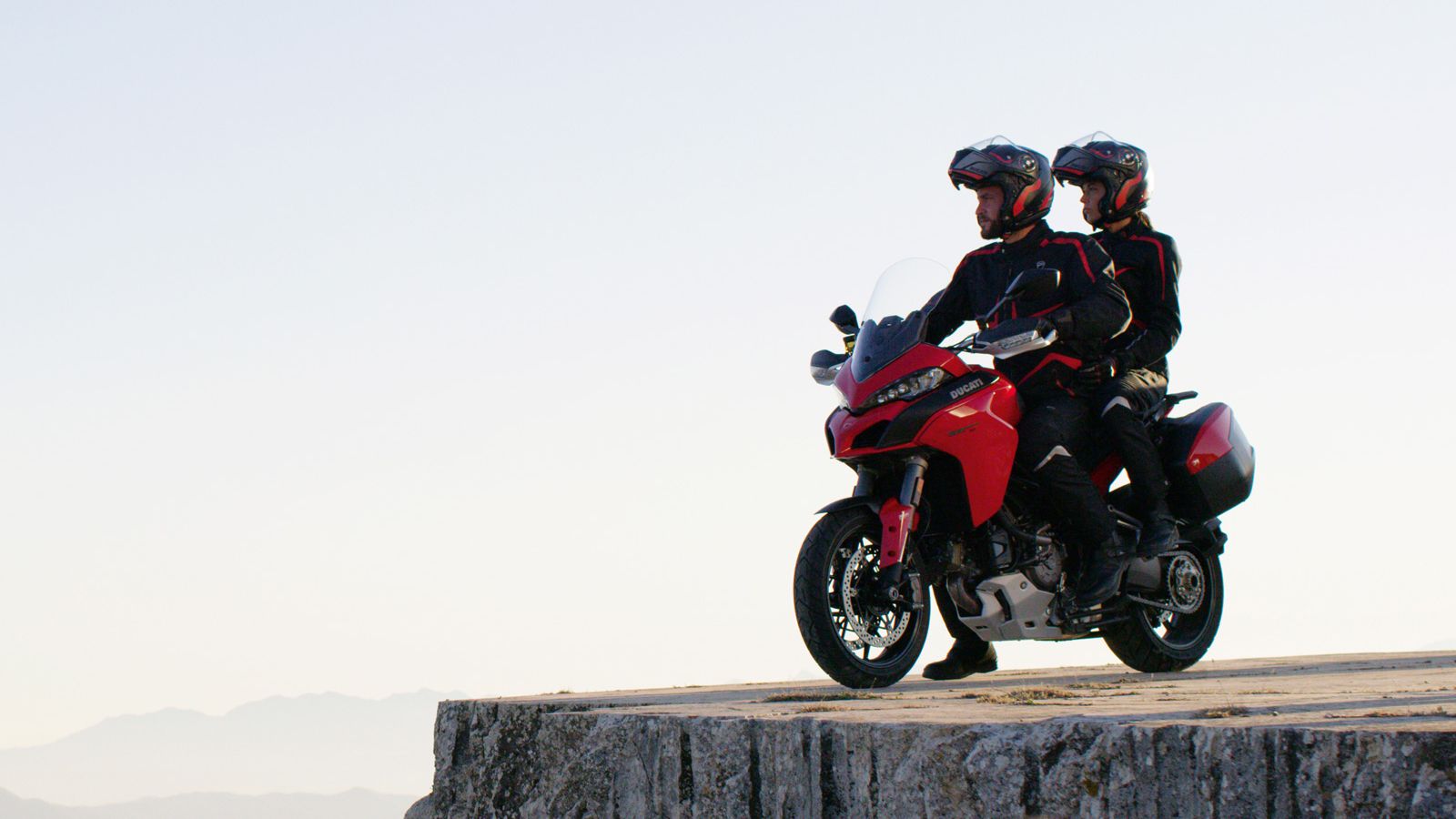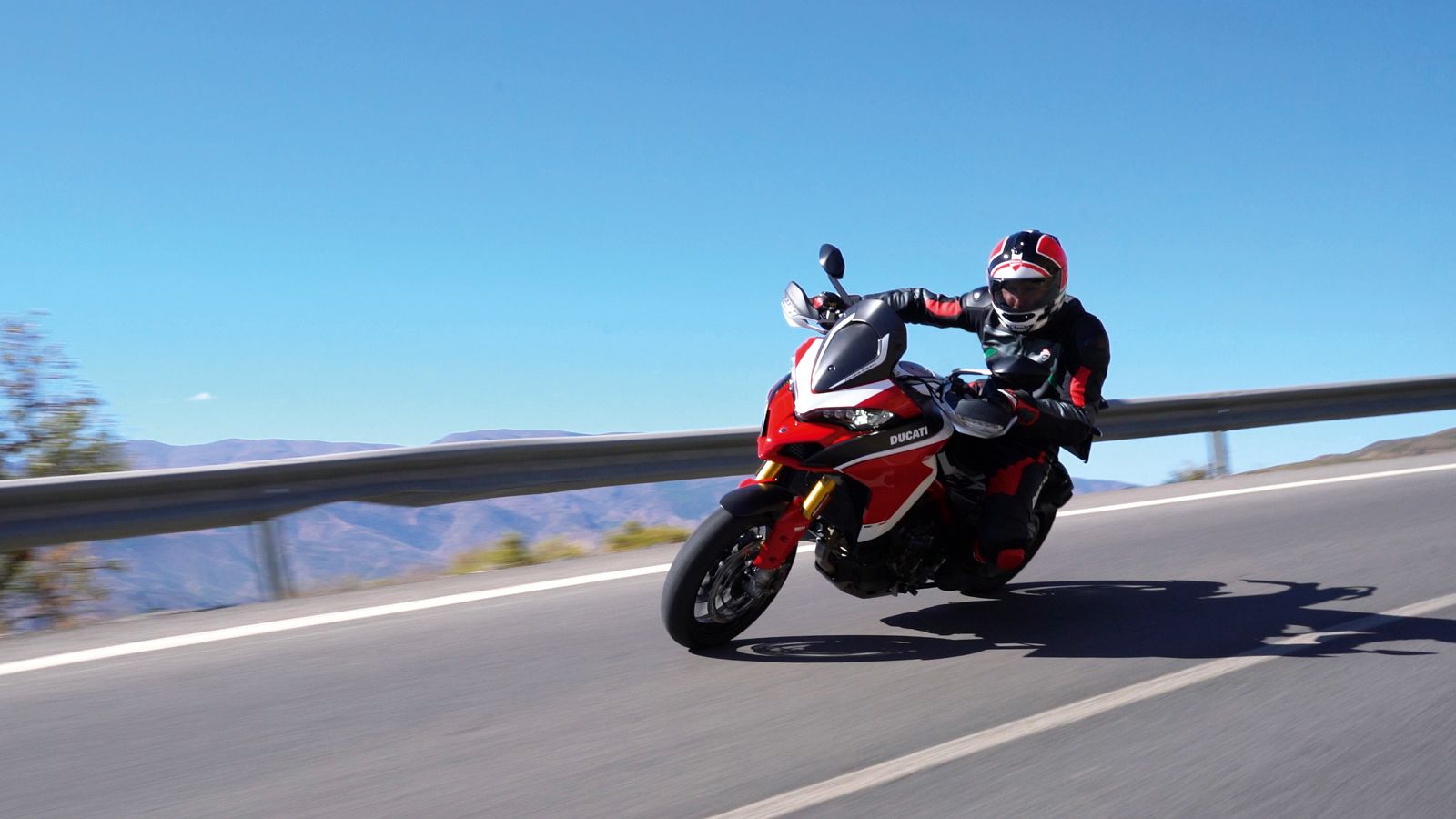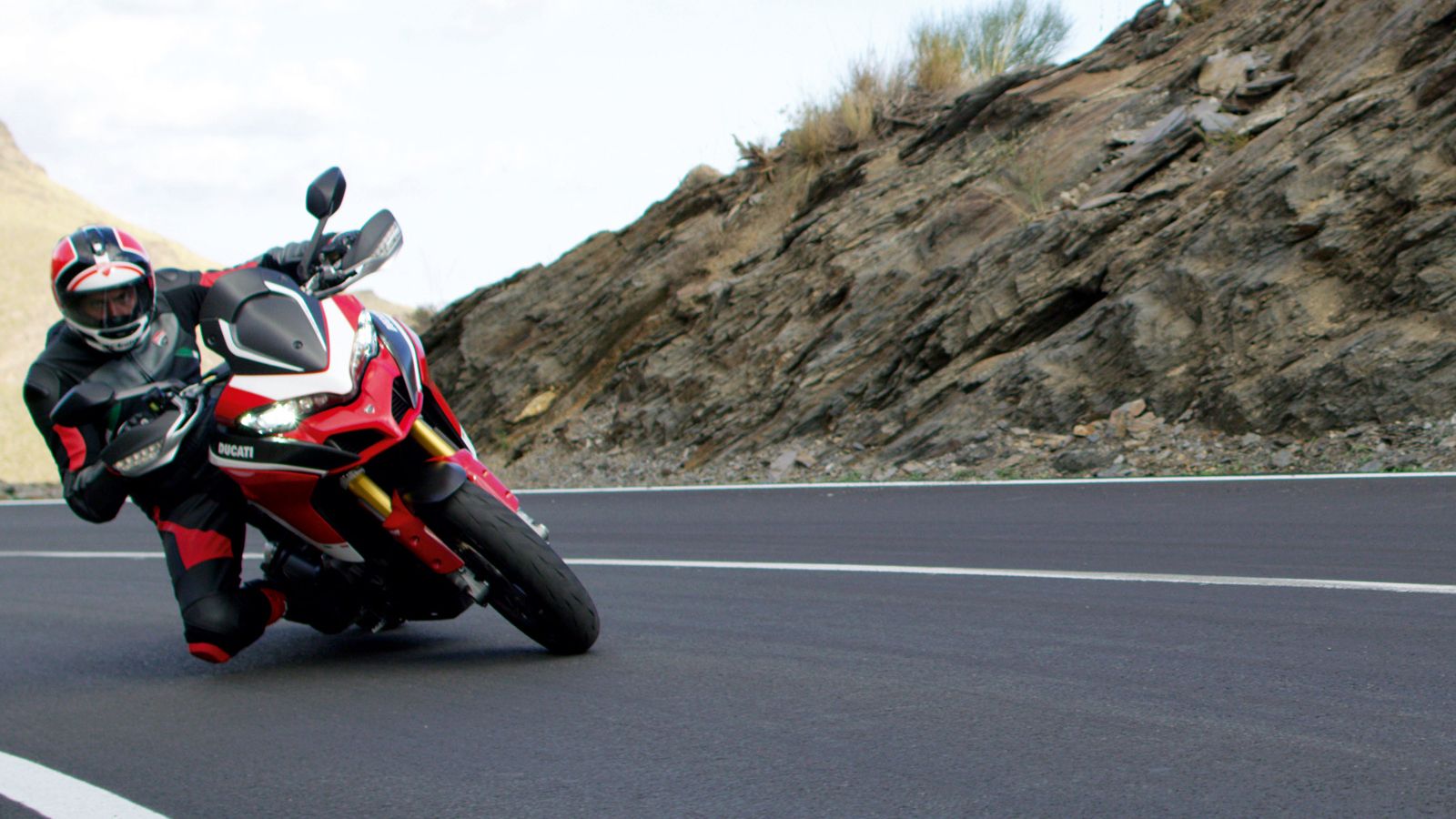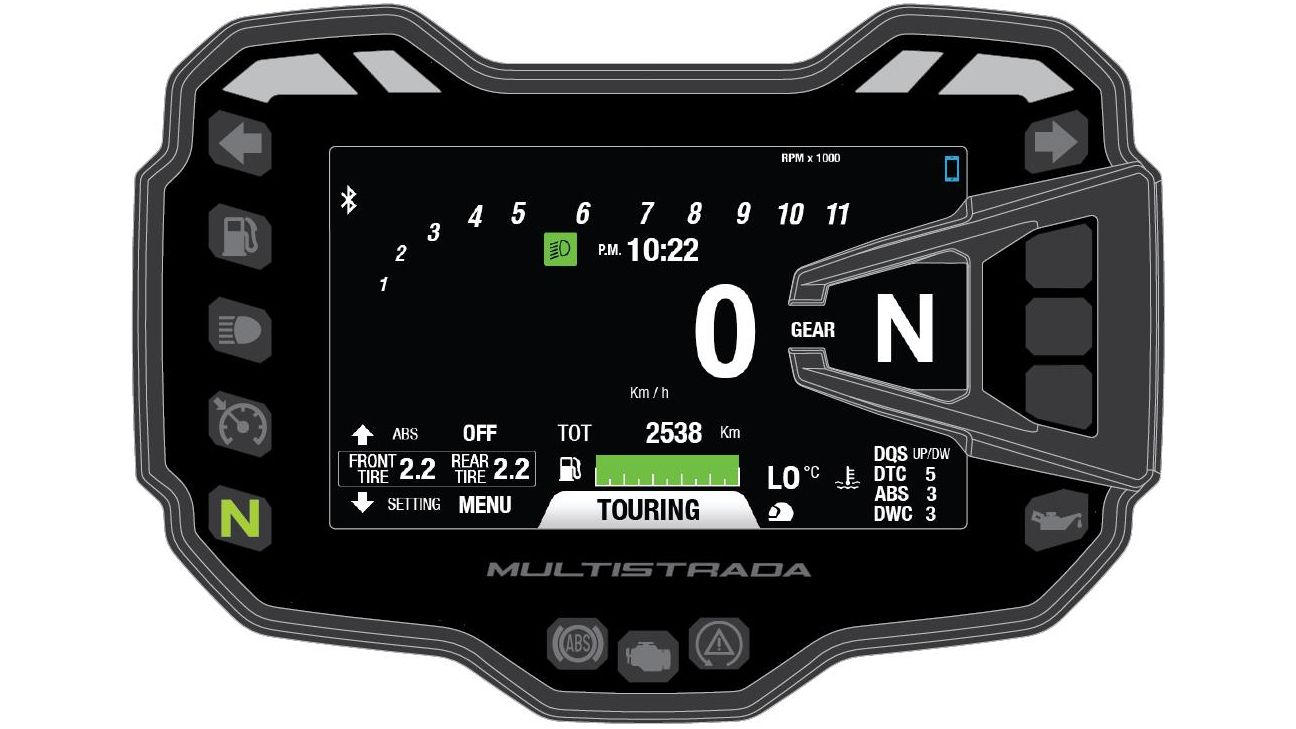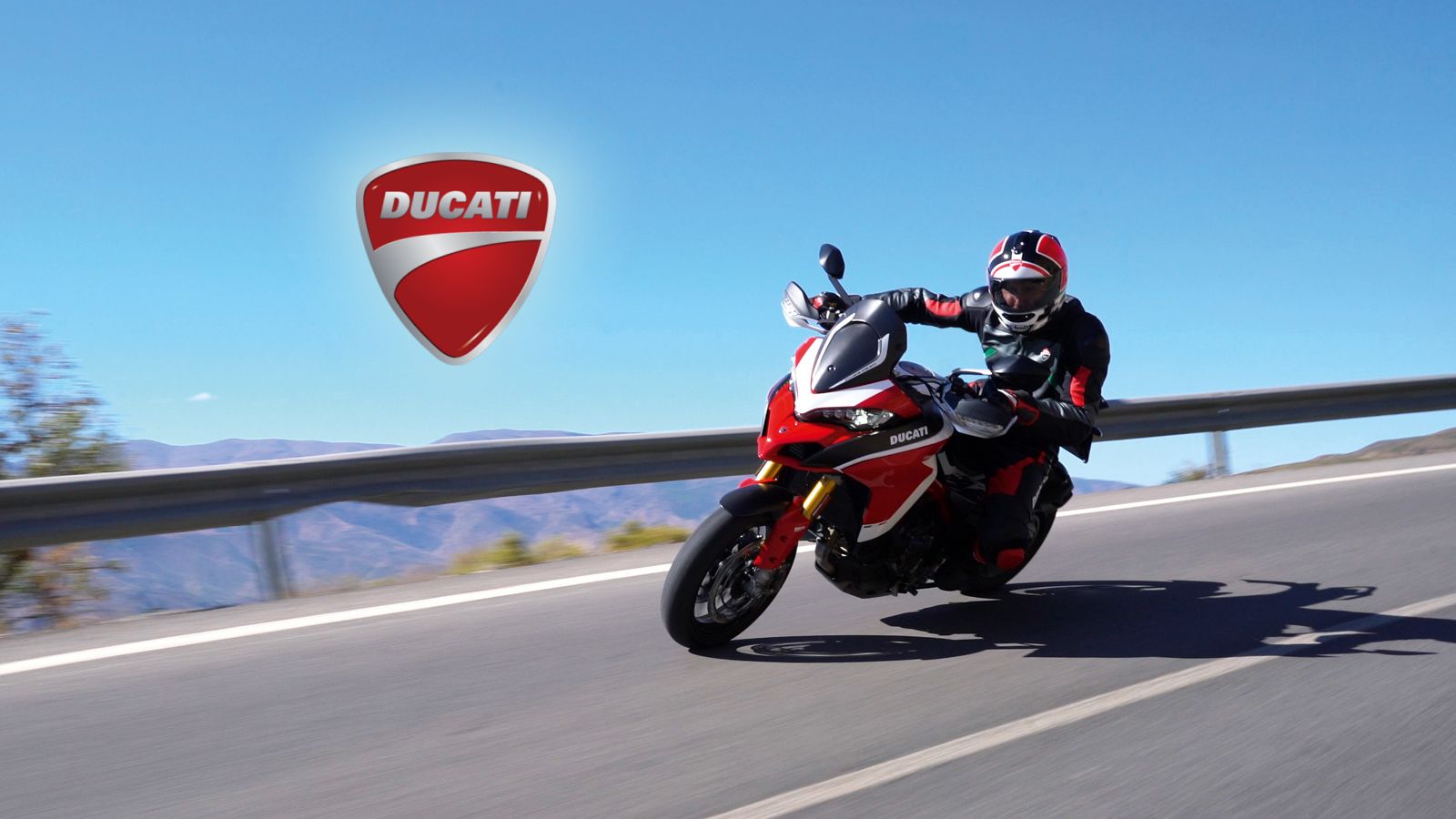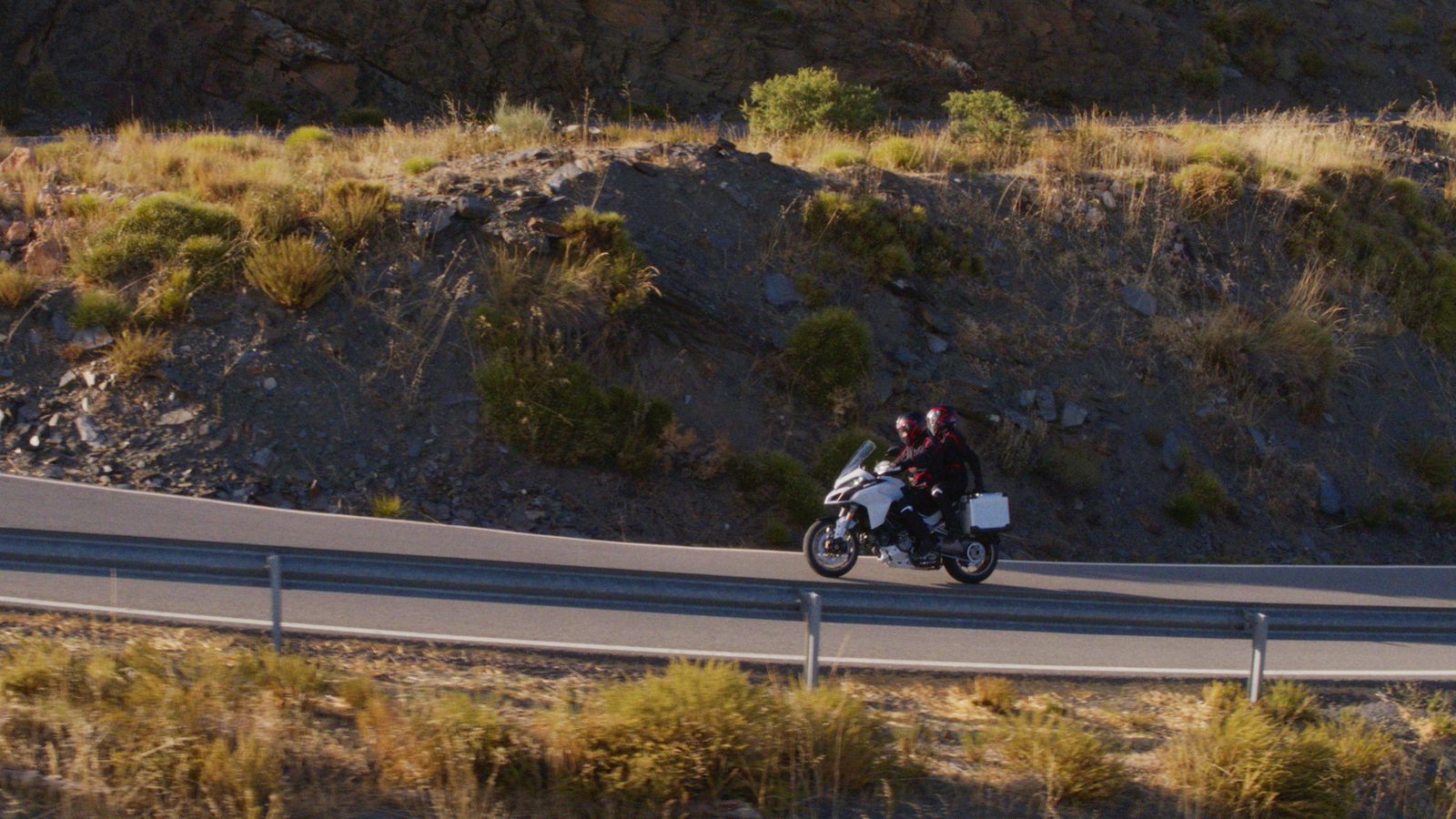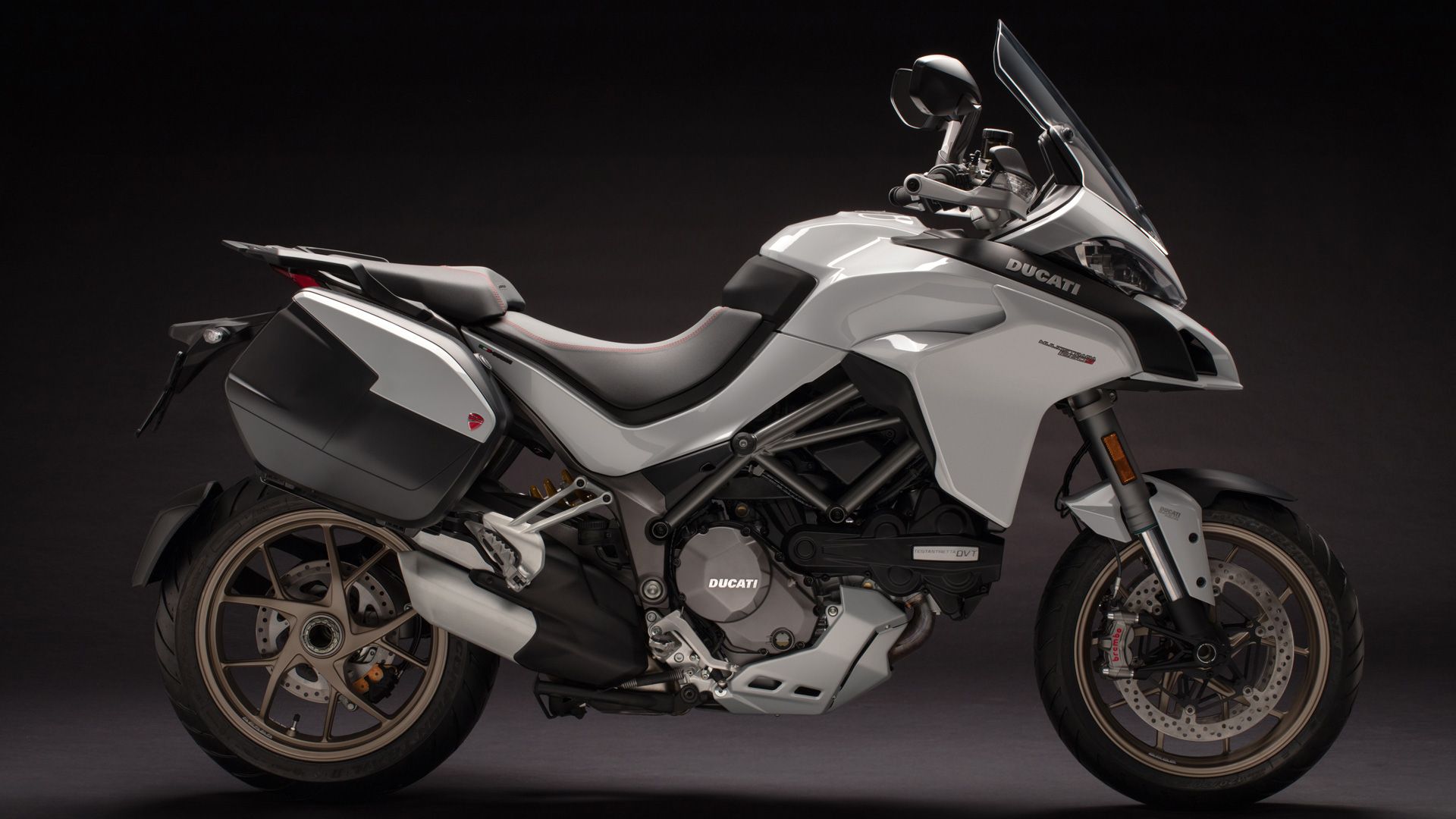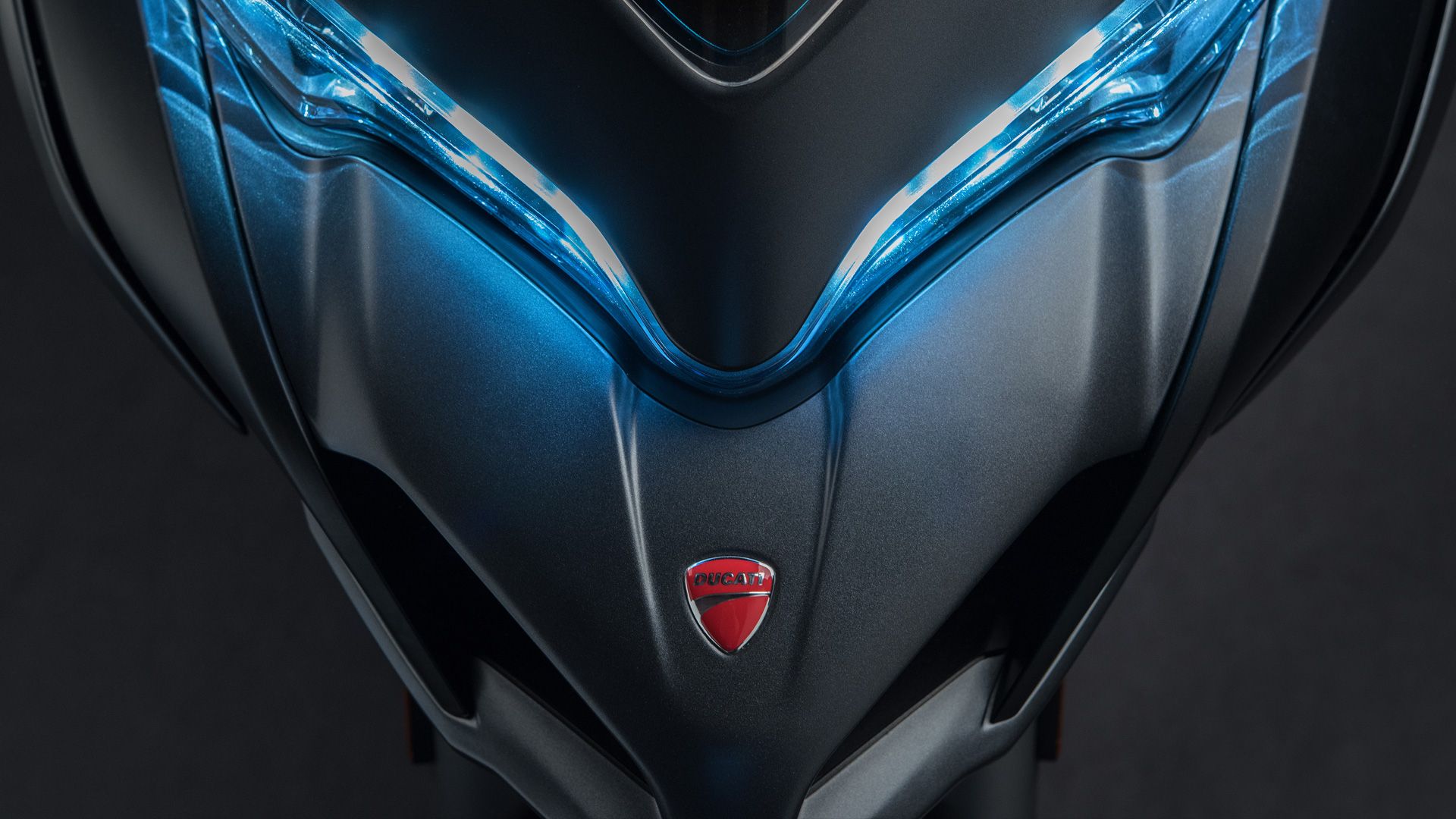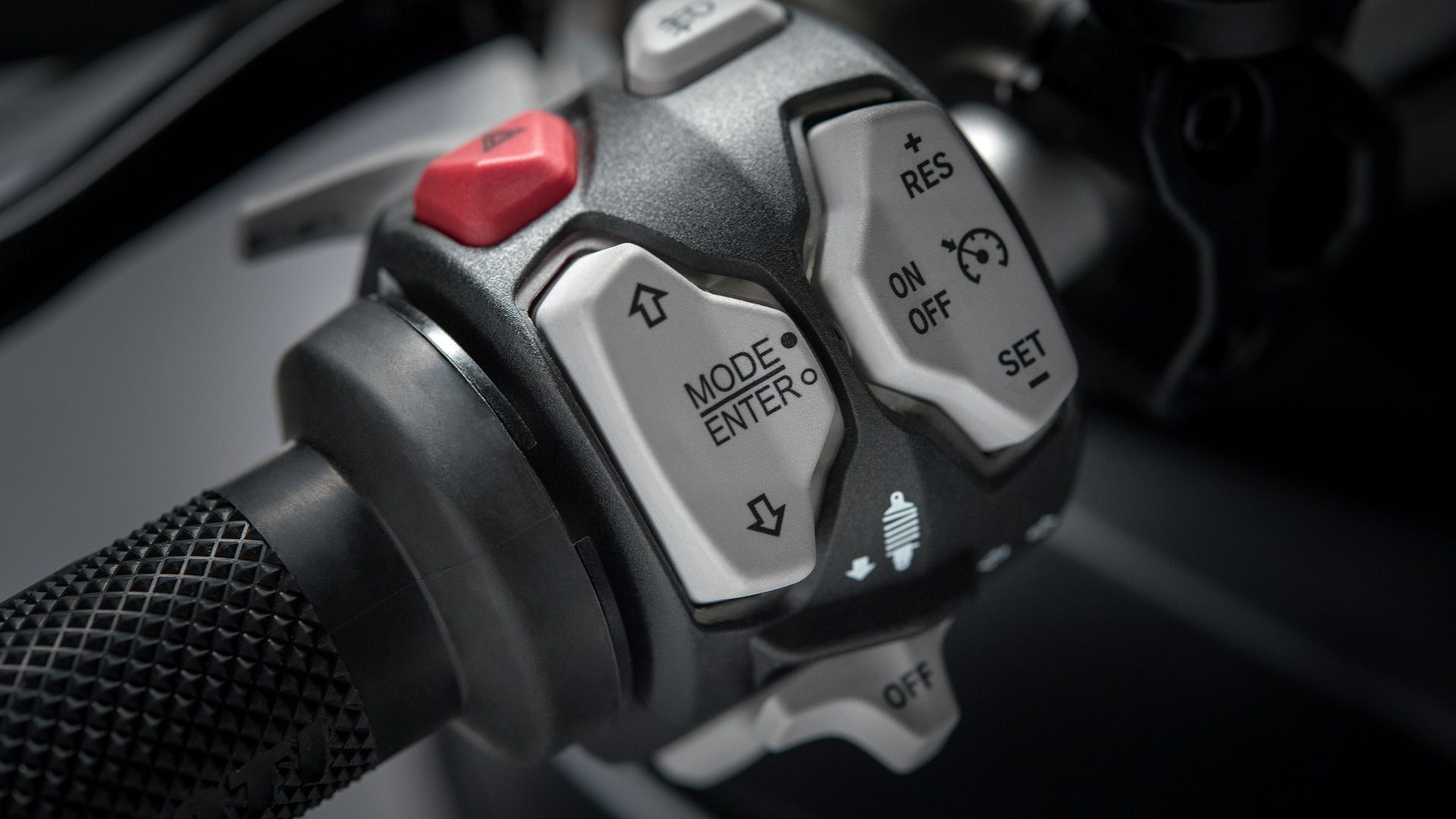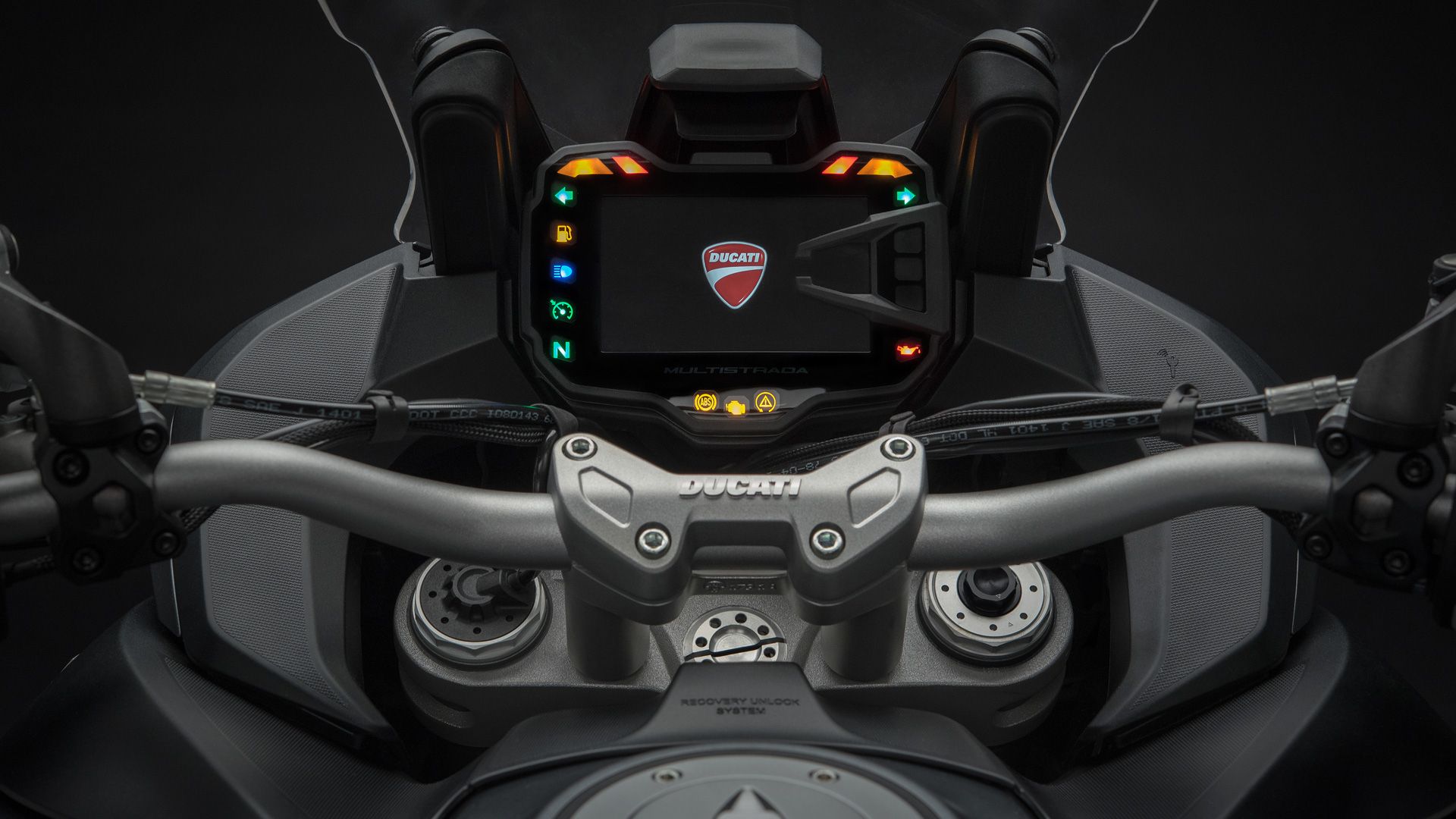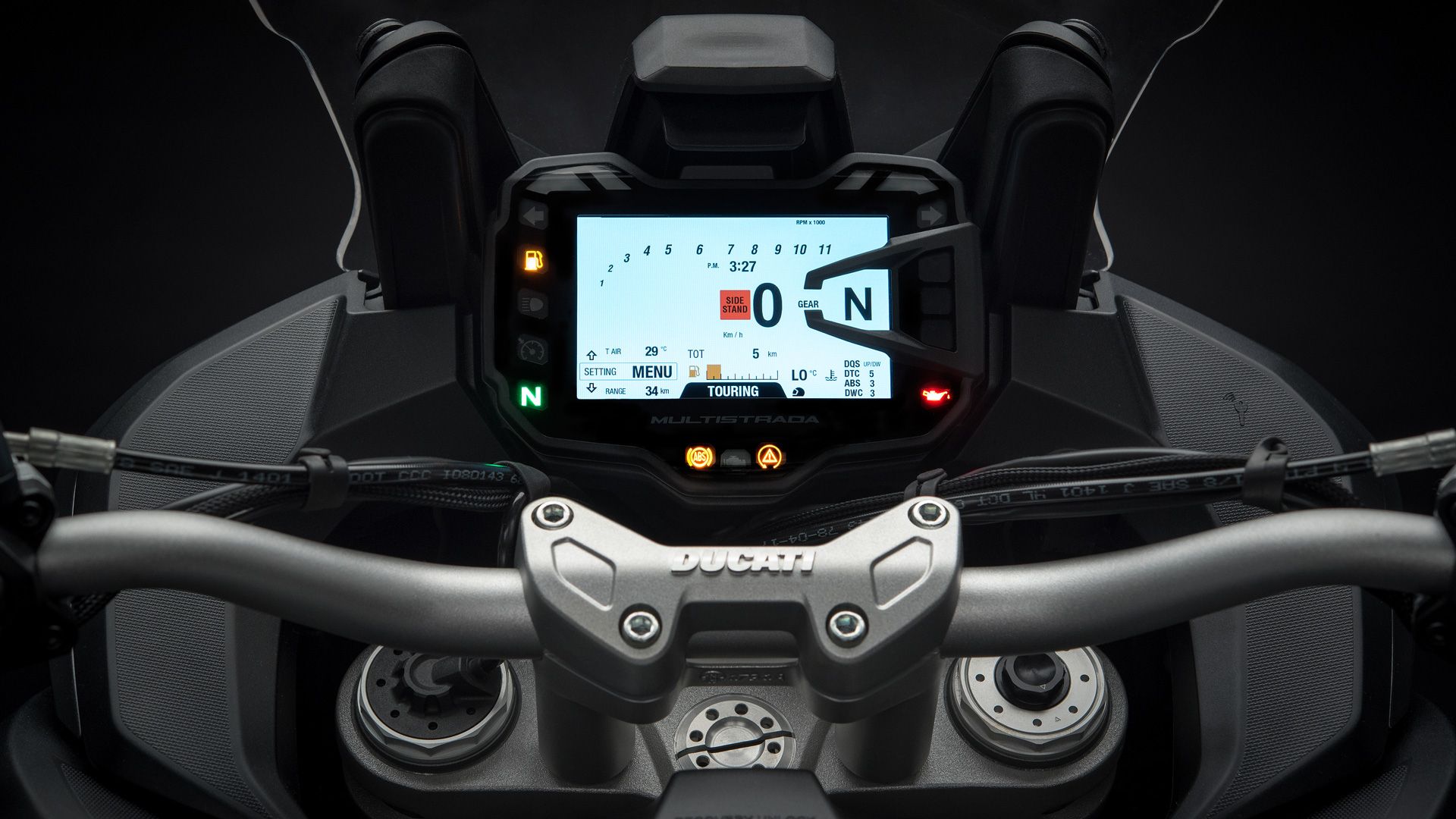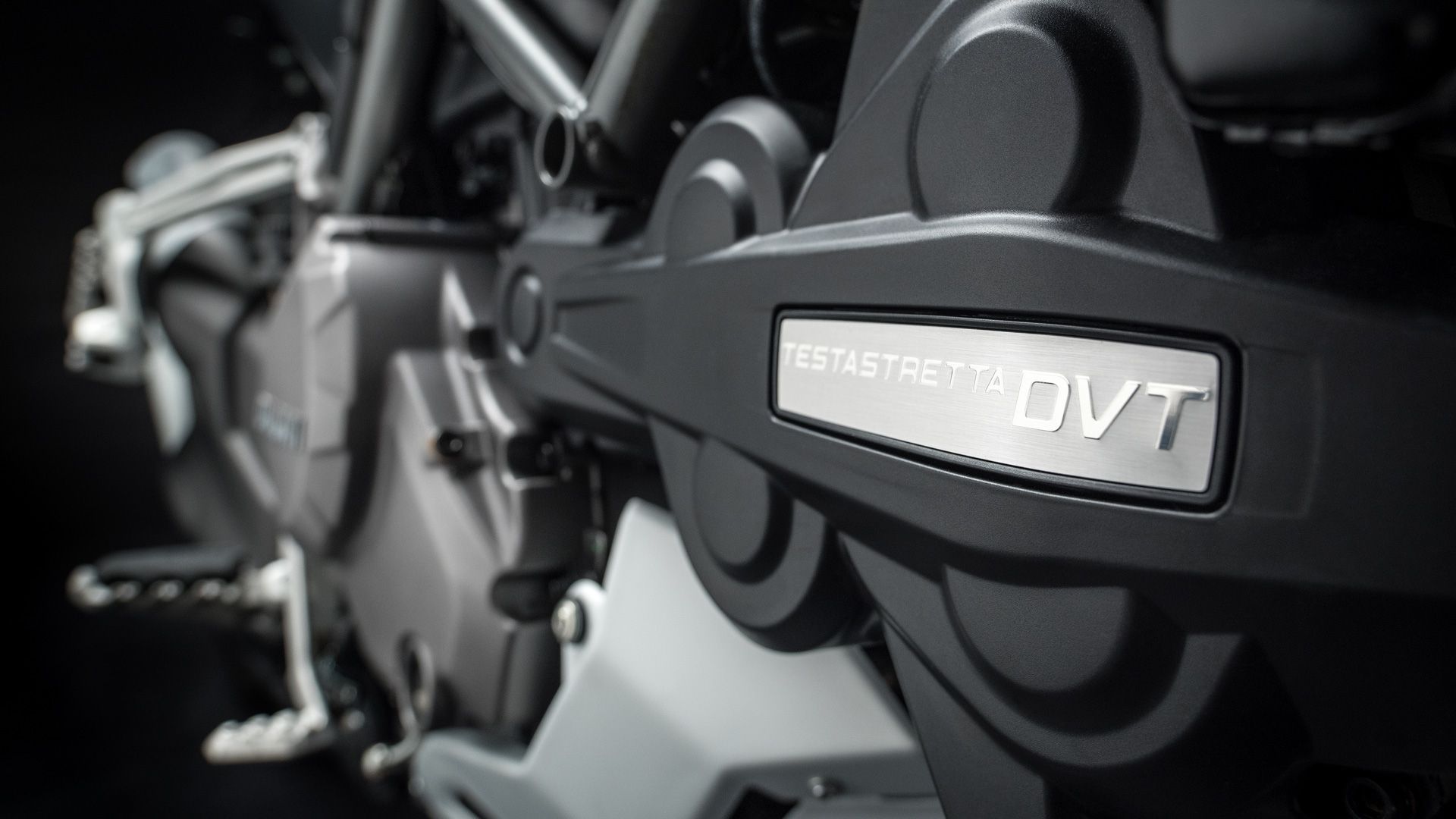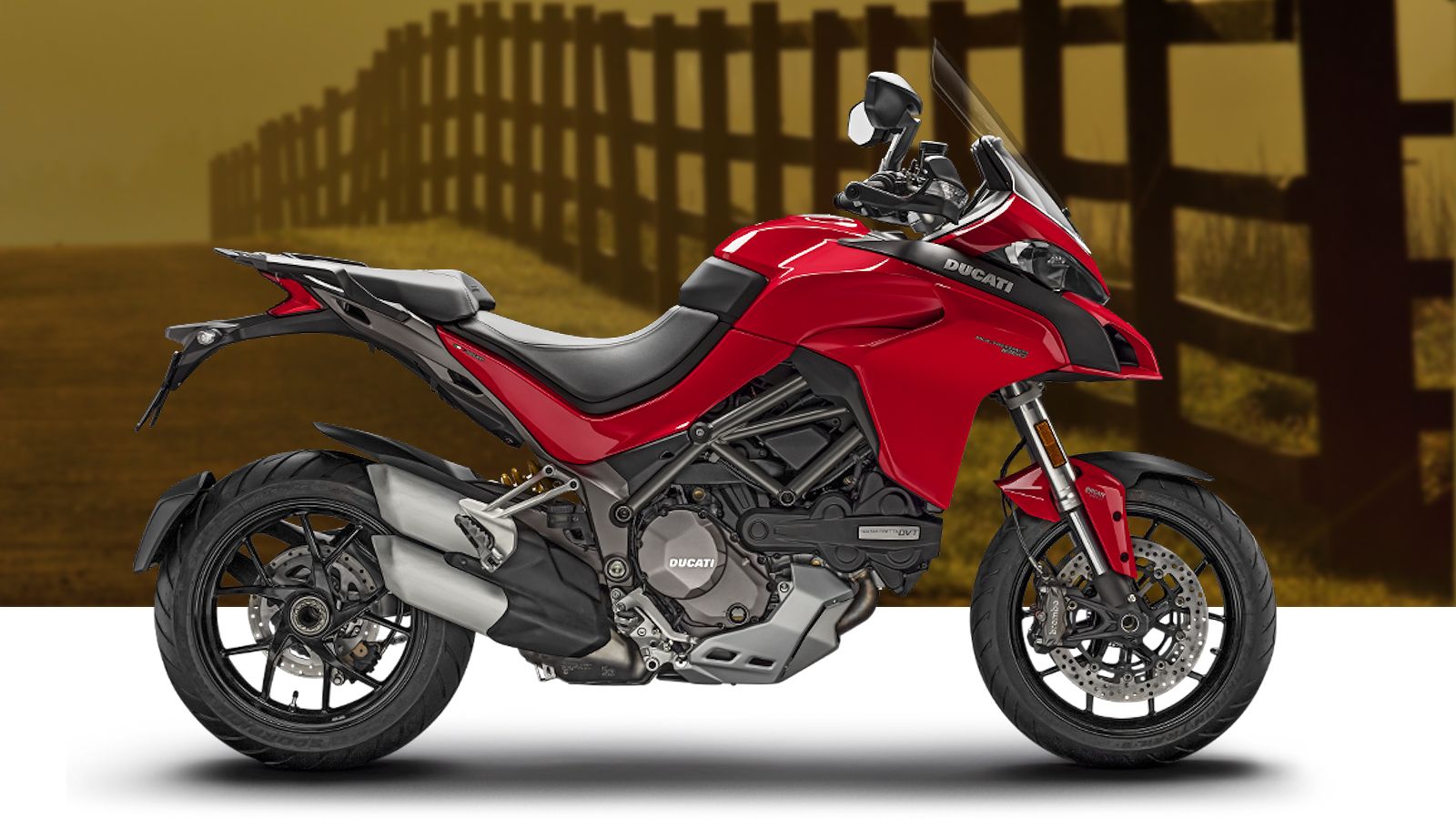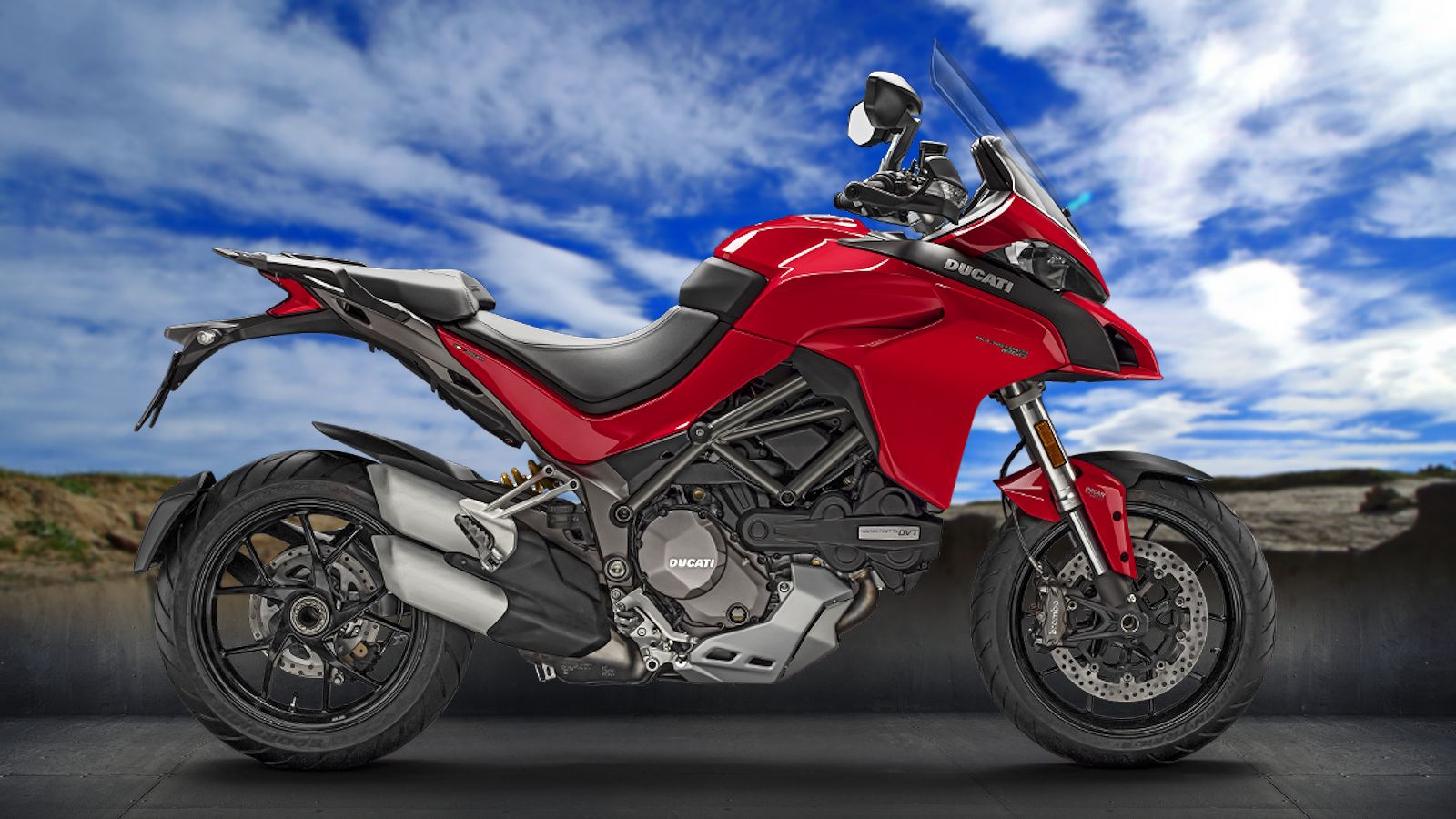Ducati's globetrotting Multistrada 1260 lives to see another model year with enough improvements in 2018 to qualify as an all-new motorcycle. The adventuresome “MS” sees the next phase of its progression with a new Testastretta engine, new electronics to help manage it and a new chassis to hold it all together. Ducati's variable valve timing feature makes an appearance to help deliver 85-percent of the available 95.5 pound-feet of torque at 3,500 rpm for a much fatter mid-range than its predecessor. Traction control, wheelie control and ABS come with the standard package with even more fandanglery to be found 'under the hood' as it were.
2018 - 2019 Ducati Multistrada 1260
- Make: Array
- Model: 2018 - 2019 Ducati Multistrada 1260
- Engine/Motor: L-Twin
- [do not use] Vehicle Model: Array
Ducati Multistrada 1260 Design
The MS 1260 serves as the basis for the more specialized adventure models further up the chain, but it isn't to be considered the “poor cousin” by any means, and is a capable machine in its own right.Cast rims and street tires indicate a clear bias toward the blacktop, and this sets the tone bright and early. The front fender comes heavily bobbed with a fetching black-and-red finish that ties in nicely with the rest of the bike as it's a common thread from head to tail, and you can go ahead and pencil me in as a fan, 'cause I like that Ducati red.
A bird's beak front fairing carries eye-like, dual recessed headlight housings divided by an angular brow that contributes to the stacked-Vee visage greeting the eye head-on. The headlight clusters seem to be extended by the handguard-mount turn signals that fall along the same plane, entirely by design, I'm sure.
Up top, a narrow windshield punches a hole in the wind to form the pocket for the rider and protect the instrument cluster that includes a TFT screen display and a handful of idiot lights that covers all the bases. The display itself gets a buff in MY2018 with an easier-to-see screen and streamlined menu navigation, and it also serves as an interface that allows you to access and tailor the various ride-control systems.
In profile, the MS 1260 displays the typical high fuel hump and high pillion platform with the pilot seat nestled in the swale between. This puts the rider in the bike more than just perched on it to leave the pilot's derrière well-ensconced with room for most to be able to operate the bike from a standing position for technical work. Though the seat has a narrow entry where it meets the waist, it flares out nicely to form a full butt bucket and carries that width all the way back for a generous pillion pad complete with J.C. handles.
An LED taillight fills the gap between p-pad and rear fender with a subframe-mount mudguard/plateholder and two huggers to manage the fling from the rear wheel. All-in-all, the MS 1260 manages to achieve a sense of graceful flow from head to toe; no mean feat for such a utilitarian genre.
Ducati Multistrada 1260 Chassis
Ducati completely reworked the steel Trellis bones for this new generation. First off, the whole shebang was stretched by 2.2 inches due to the extra 1.9 inches on the single-sided aluminum swingarm and extra degree of rake that pushes the front end out to a total of 25 degrees with 4.37 inches of rake. Those numbers indicate a ride that is a tad more stable than the previous gen, but not too much, so it remains at the sporty end of the handling spectrum in spite of the adjustments.
Symmetrical 17-inch wheels round out the rolling chassis with blackout Y-spoke rims and Pirelli's Scorpion Trail II hoops with “open rail” and “open channel” features for strong traction with deep lateral grooves to help shunt water away from the center of the tread. Sure, it has some light off-road capability as well, but the weather-worthiness is the big selling point here.
KYB supplies the front suspension components with a set of usd 48 mm stems that float the front end on the full spectrum of adjustments while the Sachs monoshock supports the rear end with the same full selection of tweaks and a remote spring-preload adjuster for easy access with clean knees.
Dual 320 mm discs work with four-pot, monobloc calipers from Brembo up front with a 265 mm disc and twin-piston anchor out back, but the star of the show here is the cornering ABS feature that comes with the standard equipment package. It measures lean angle and G-forces in the turn, then uses the data to adjust its level of interventions taking into account the need to split the available traction between steering/tracking and braking forces. Nifty, but no substitute for proper riding techniques and caution.
|
Frame: |
Tubular steel Trellis frame |
|
Rake: |
25° |
|
Trail: |
4.37 in (111 mm) |
|
Rear Suspension: |
Fully adjustable Sachs monoshock unit. Remote spring preload adjustment. Aluminum single-sided swingarm |
|
Front brake: |
2 x 320 mm semi-floating discs, radially mounted monobloc Brembo calipers, 4-piston, 2-pad, with Bosch Cornering ABS as standard equipment |
|
Rear brake: |
265 mm disc, 2-piston floating caliper, with Bosch Cornering ABS as standard equipment |
|
Front wheel/Travel: |
5-spoke Y-shape cast light alloy 3.50" x 17"/ 6.7 in (170 mm) |
|
Rear Wheel/ Travel: |
5-spoke Y-shaped cast light alloy 6.00" x 17"/ 6.7 in (170 mm) |
|
Front tire: |
Pirelli Scorpion Trail II 120/70 R17 |
|
Rear tire: |
Pirelli Scorpion Trail II 190/55 R17 |
Ducati Multistrada 1260 Drivetrain
The beating heart is one of Ducati's L-twin powerplants thatfeatures all the things the marque is famous for. It's a 90-degree “Vee” that has a distinctive lope at idle not entirely unlike the “potato-potato” of a Harley, but unlike a Harley, this Italian stallion really brings the horsepower. Riders can expect a whopping 158 ponies at 9,500 rpm on top of the equally impressive 95.5 pounds o' torque that peaks at 7,500 rpm.
Yeah, that's a lot of mustard on them biscuits, but the factory gives you all the fandanglery you could need to keep it all under control. A Ride-by-Wire system indirectly controls the elliptical, 56 mm throttle bodies with Ducati's Traction Control and Wheelie Control features that weigh in with variable levels of intervention based on user settings.
These features go a long way toward improving the overall stability, regardless of rider ability, so even though I'd never call it an entry-level bike, I will say that it should be very forgiving of inexperience. You can even dial down the power with the Riding Mode feature; the Urban setting limits output to 100 horsepower for a more manageable animal when you're in civilized surrounds.
A 106 mm bore and 71.5 mm stroke gives it an actual displacement of 1,262 cc with a smokin' hot, 13-to-1 compression ratio, so you can go ahead and forget about burning anything less noble than the most expensive pump gas. The four-valve heads come with Duc's signature Desmodromic valvetrain that replaces the return spring with a pull-closed cam that provides a positive means of closure that isn't vulnerable to float due to harmonic vibrations so it's safer than the average bear at high rpm.
Dual-plug heads ensure positive flame-front propagation for power and emissions with a catalytic converter to help burn off any free hydrocarbons that make it into the exhaust stream during valve overlap. Power flows through a six-speed transmission via slipper clutch that gives the control a light touch and provides another layer of traction protection.
|
Engine: |
Ducati Testastretta DVT with Desmodromic Variable Timing, L-Twin cylinder, 4 valves per cylinder, Dual Spark, liquid cooled |
|
Displacement: |
1.262 cc |
|
Bore x Stroke: |
106 mm x 71.5 mm |
|
Compression ratio: |
13:1 |
|
Power: |
155.88 hp (116.2 kW) @ 9.500 rpm |
|
Torque: |
95.5 lb-ft (129.5 Nm) @ 7,500 rpm |
|
Fuel injection: |
Bosch electronic fuel injection system, elliptical throttle bodies with Ride-by-Wire, equivalent diameter 56 mm |
|
Exhaust: |
Stainless steel muffler with catalytic converter and 2 lambda probes, aluminum tail pipes |
|
Gearbox: |
6 speed |
|
Clutch: |
Light action, wet, multiplate clutch with hydraulic control. Self-servo action on drive, slipper action on over-run |
Ducati Multistrada 1260 Price
The base-model Multistrada 1260 rolls for $18,695 with the standard equipment package. If you're like me, you'll be okay with the Ducati Red colorway, but too-bad-so-sad if you're not 'cause this is the only palette available for this model.
|
Safety equipment: |
Vehicle Hold Control (VHC), Riding Modes, Power Modes, Ducati Safety Pack (Bosch Cornering ABS + DTC), Ducati Wheelie Control (DWC) |
|
Standard equipment: |
Cruise control, Hands-Free, Backlit handlebar switches, Auto-off indicators |
|
Optional Equipment: |
Ready for Ducati Quick Shift (DQS) up/down, Ducati Multimedia System (DMS), Anti-theft |
|
Warranty: |
24 months, unlimited mileage |
|
Color: |
|
|
└ 2018: |
Ducati Red/Mineral Grey |
|
└ 2019: |
Ducati Red |
|
Price: |
$18,695 |
Ducati Multistrada 1260 Competitors
Ducati makes a top-notch product, so I needed another top-shelf bike for my competitor and Triumph rose to the challenge with its Tiger 1200 XR. Visually, the Tiger covers much of the same ground as the Multistrada, but it does so in its usual British style. It's a bit chunkier, a bit more utilitarian with nothing of the grace the MS brings to the table. I mean, as form follows function, it's still a good-looking bike, but the Brit certainly lacks the sex-on-wheels vibe of the Italian.
Steel Trellis foundations are the rule of the day across the board, as are fully adjustable suspension components and ABS. Trumpet falls short in the brakes anyway, 'cause no matter how cool the Tiger's switchable ABS is, it can't hold a candle to Ducati's corner-sensitive ABS. Triumph has Rider Modes and a Traction Control feature, but falls short in the electronics department in the face of the alphabet soup of subsystems hosted by the MS.
Power falls off a bit too, but only by the slimmest of margins with 139 ponies and 90 pounds o' torque against 158/95; close enough for government work. Triumph gets some back at the checkout with a $16,500 sticker, but honestly if you're already trashing 20k, you probably aren't going to be splitting hairs over a couple o' grand.
He Said
“Sex-ay! That's right, I'm going to look right past the performance and go right for the looks. The not-so-subtle curves manage to turn this commuter/road-adventurer into a head turner in its own right, and as far as commuters go, it would be hard to top this bottom-tier Multistrada 1260.”
She Said
My wife and fellow motorcycle writer, Allyn Hinton, says, “The throttle maps on the Multistradas really encompass the whole bike, changing not only the throttle response, but also suspension as well, so the whole attitude of the ride is changed. As a sport bike, it's really nice; the Urban mode makes it a nice around-town bike, and as a tourer, yeah, again, nice. I keep using that word, but really it's three bikes in one and the modes really alter its character to fit each in turn.”
Ducati Multistrada 1260 Specifications
|
Engine & Drivetrain: |
|
|
Engine: |
Ducati Testastretta DVT with Desmodromic Variable Timing, L-Twin cylinder, 4 valves per cylinder, Dual Spark, liquid cooled |
|
Displacement: |
1.262 cc |
|
Bore x Stroke: |
106 mm x 71.5 mm |
|
Compression ratio: |
13:1 |
|
Power: |
155.88 hp (116.2 kW) @ 9.500 rpm |
|
Torque: |
95.5 lb-ft (129.5 Nm) @ 7,500 rpm |
|
Fuel injection: |
Bosch electronic fuel injection system, elliptical throttle bodies with Ride-by-Wire, equivalent diameter 56 mm |
|
Exhaust: |
Stainless steel muffler with catalytic converter and 2 lambda probes, aluminum tail pipes |
|
Gearbox: |
6 speed |
|
Primary drive: |
Straight cut gears; Ratio 1.84:1 |
|
Ratio: |
1=37/15 2=30/17 3=27/20 4=24/22 5=23/24 6=22/25 |
|
Final drive: |
Chain; Front sprocket 15; Rear sprocket 40 |
|
Clutch: |
Light action, wet, multiplate clutch with hydraulic control. Self-servo action on drive, slipper action on over-run |
|
Chassis: |
|
|
Frame: |
Tubular steel Trellis frame |
|
Rake: |
25° |
|
Trail: |
4.37 in (111 mm) |
|
Rear Suspension: |
Fully adjustable Sachs monoshock unit. Remote spring preload adjustment. Aluminum single-sided swingarm |
|
Front brake: |
2 x 320 mm semi-floating discs, radially mounted monobloc Brembo calipers, 4-piston, 2-pad, with Bosch Cornering ABS as standard equipment |
|
Rear brake: |
265 mm disc, 2-piston floating caliper, with Bosch Cornering ABS as standard equipment |
|
Front wheel/Travel: |
5-spoke Y-shape cast light alloy 3.50" x 17"/ 6.7 in (170 mm) |
|
Rear Wheel/ Travel: |
5-spoke Y-shaped cast light alloy 6.00" x 17"/ 6.7 in (170 mm) |
|
Front tire: |
Pirelli Scorpion Trail II 120/70 R17 |
|
Rear tire: |
Pirelli Scorpion Trail II 190/55 R17 |
|
Dimensions & Capacities: |
|
|
Seat height: |
Adjustable 32.5 - 33.3 in (825 - 845 mm) |
|
Wheelbase: |
62.4 in (1,585 mm) |
|
Dry weight: |
461 lb (209 kg) |
|
Kerb weight: |
511 lb ( 232 kg) |
|
Fuel tank capacity: |
5.3 gallon (20 l) |
|
Fuel Economy: |
45.2 mpg (5.2l/100 km) |
|
Number of seats: |
Dual seat |
|
Top Spoeed: |
150 mph (est) |
|
Details: |
|
|
Instrumentation: |
LCD |
|
Safety equipment: |
Vehicle Hold Control (VHC), Riding Modes, Power Modes, Ducati Safety Pack (Bosch Cornering ABS + DTC), Ducati Wheelie Control (DWC) |
|
Standard equipment: |
Cruise control, Hands-Free, Backlit handlebar switches, Auto-off indicators |
|
Additional Equipment: |
Ready for Ducati Quick Shift (DQS) up/down, Ducati Multimedia System (DMS), Anti-theft |
|
Warranty: |
24 months, unlimited mileage |
|
Standard: |
Euro 4 |
|
Color: |
|
|
└ 2018: |
Ducati Red/Mineral Grey |
|
└ 2019: |
Ducati Red |
|
Price: |
$18,695 |
Further Reading
Triumph Tiger 1200 XR
See our review of the Triumph Tiger 1200 XR.
Ducati Multistrada 1260 Enduro
See our review of the Ducato Multistrada 1260 Enduro.
|
air |
|
See our review of the Ducato Multistrada 1260 S / S D |
air. |
Ducati Multistrada 1260 Pikes Peak
See our review of the Ducati Multistrada 1260 Pikes Peak
Ducati
Read more Ducati news.


